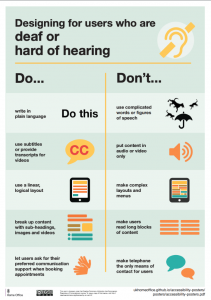In Duncan Watts’ insightful book, Everything Is Obvious, Once You Know the Answer, he suggests that common sense often misleads us when it comes to forecasting, success, and the drivers thereof.
Nowhere is this truer than with a new product. For most FMCG (Fast Moving Consumer Goods) marketers, consistently launching a stream of successful new products feels elusive and challenging. When the rare success occurs, everyone seems to have a theory as to why:
Great product!
Great advertising!
Key influencers!
Social media!
Etc.
Watts argues that this post facto storytelling often gets in the way of understanding the truth of what really caused success. Even more important than the “story” behind the success is knowing what to do differently to improve future results.
New Product Success Rates—Painfully Low
Saying this is important is an understatement. Only about 15% of the thousands of new FMCG product launches each year are successful in meeting their original launch objectives. And “breakthrough” new product innovations—e.g. those that generate $ 50M or more in sales, maintain distribution and volume in Year 2, and score high on differentiation versus competitors, represent less than ½ of 1% of new products.
So, there’s clearly a lot of room for improvement. How do we get better at this? The answer lies in four areas: idea development, initiative optimization, validation, and executional excellence. Marketers that do these things well are much more likely to succeed with new products than those who don’t.
Idea Development—How Do I Get More, Bigger Ideas?
Nielsen data shows that very few FMCG companies are creating a consistent and steady flow of big, new product ideas. Most ideas are similar to existing products or fail to address an important consumer need. So how do you develop more, bigger new product ideas?
Collaboration—Behavioral psychology conclusively demonstrates that collaborative teams are more successful in solving problems than individuals. Applied to new product development, Nielsen’s data shows that clients are more likely to generate winning product concepts as more individuals and more functions are involved in creating and building concepts. Historically, this has been challenging to do in practice, but new technology platforms enable simple and easy collaboration across new product development teams.
Genetic Algorithms—Traditional concept testing is generally limited to less than ten concepts or so. Each concept typically has an accepted consumer belief, a benefit, a reason to believe and so forth. New tools enable the automated development of literally thousands of concepts constructed by consumer preference and driven by genetic algorithms identifying the optimal concepts among specific target groups. So, instead of a few concepts, you can test thousands to identify the best of the best.
Initiative Optimization—How Do I Make a Good New Product Idea Even Better?
Identifying a winning new product concept is necessary, but not sufficient. Marketers also need to optimize their entire go to market plan. Several of the most critical factors are line-up, pricing, and packaging. But, in my experience, most Marketers use a combination of past experience and judgment to refine these critical parts of the offering, often leaving substantial money on the table.
Marketers can dramatically improve results with “Round 2” optimization of these plans, using tools which optimize based on consumer input and preferences. How much better are these optimized plans? While there is no single answer, it’s not uncommon for optimized plans to increase volumetric impact by as much as 20% to 30%.
Validation—Can I Be Confident It Will Really Work?
Now that I have a winning concept and an optimized plan, what are my odds of success? How much volume can I expect from my initiative? These are table-stakes questions that should always be answered before making a launch decision.
Nielsen research shows there are five distinct factors that are critical to success to virtually all new products:
- Salience—Is the value proposition distinct and attention getting?
- Communication—Is your messaging clear, focused, and simple?
- Attraction—Does your product address an important need, is it better than competitors, and does it have credibility, all with acceptable product downsides?
- Point of Purchase—Is your product easily findable in-store and priced to deliver real consumer value?
- Endurance—Does your product deliver on your concept promise and engender longer term loyalty?
Answering these five questions with data and then comparing your proposition to relevant category benchmarks is critical to success. Also, this is not a menu where you pick and choose where you want to excel. Winning products excel at all of them; having a single weakest link can be deadly.
Activation—Now That I’m Launching, How Do I Execute with Excellence?
Alas, even a winning concept idea, optimized plans, and validation can’t ensure success without excellent in-market execution. Up to 40% of new products fail because of weak execution in the real world.
First, track the key factors that underpin key volume assumptions: household penetration, repeat rate, volume per repeat, and purchase frequency. Determine if each factor is on track or not to meeting your goals.
Second, measure the controllable marketing factors: distribution, pricing, merchandising, advertising, etc. Most of these can be measured in close to real time. Importantly, set up a “war room” where decisions to optimize and improve on each of these factors can be made quickly—before your launch spending runs out and it’s too late.
New Product Success Is Obvious—Once You Know the Answer
As Duncan Watts said, everything is obvious, once you know the answer. What’s now more obvious than ever is that FMCG marketers need to improve their new product success batting average. New approaches to idea development, initiative optimization, validation, and activation are the obvious steps to greater success. And now that you know that, you just have to make up a compelling story to explain your next runaway new product success.
Business & Finance Articles on Business 2 Community(58)






